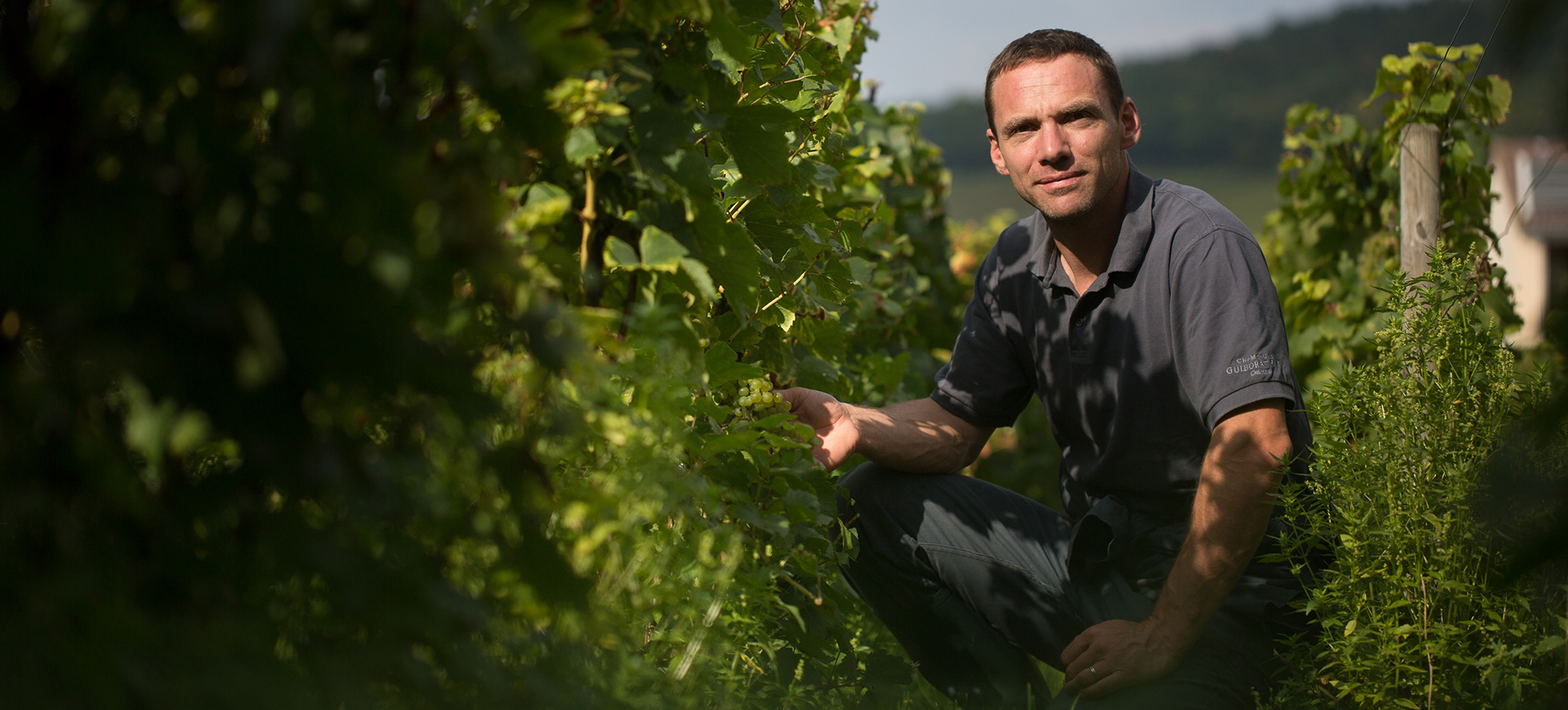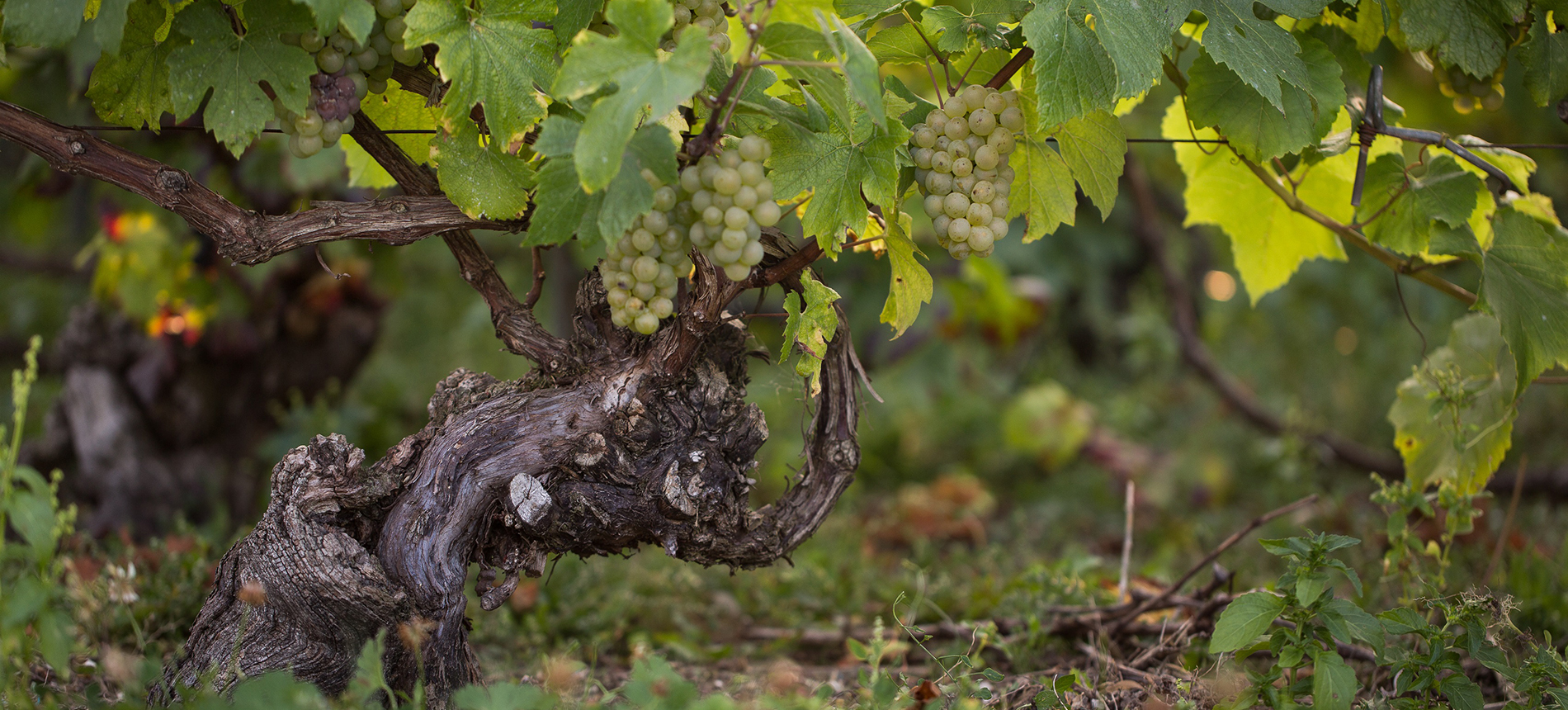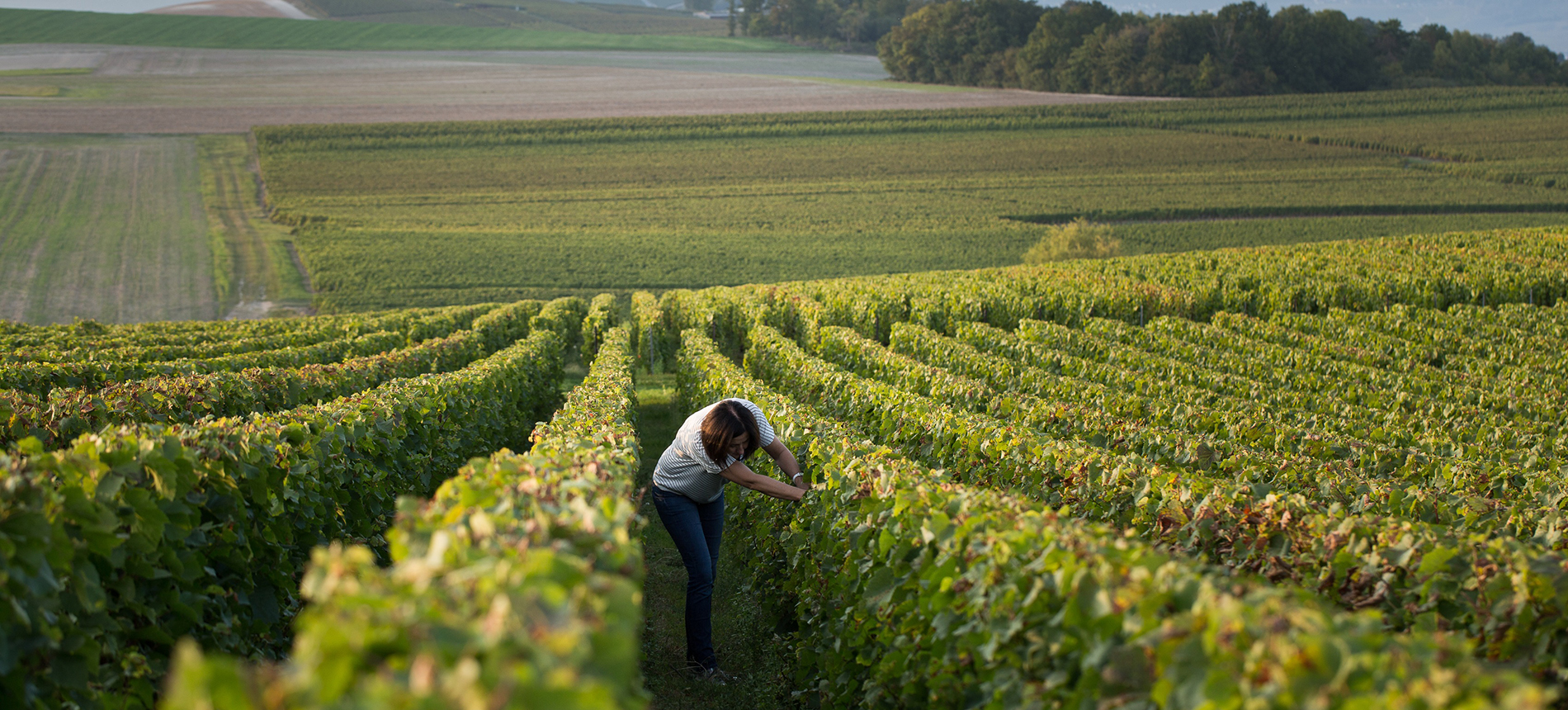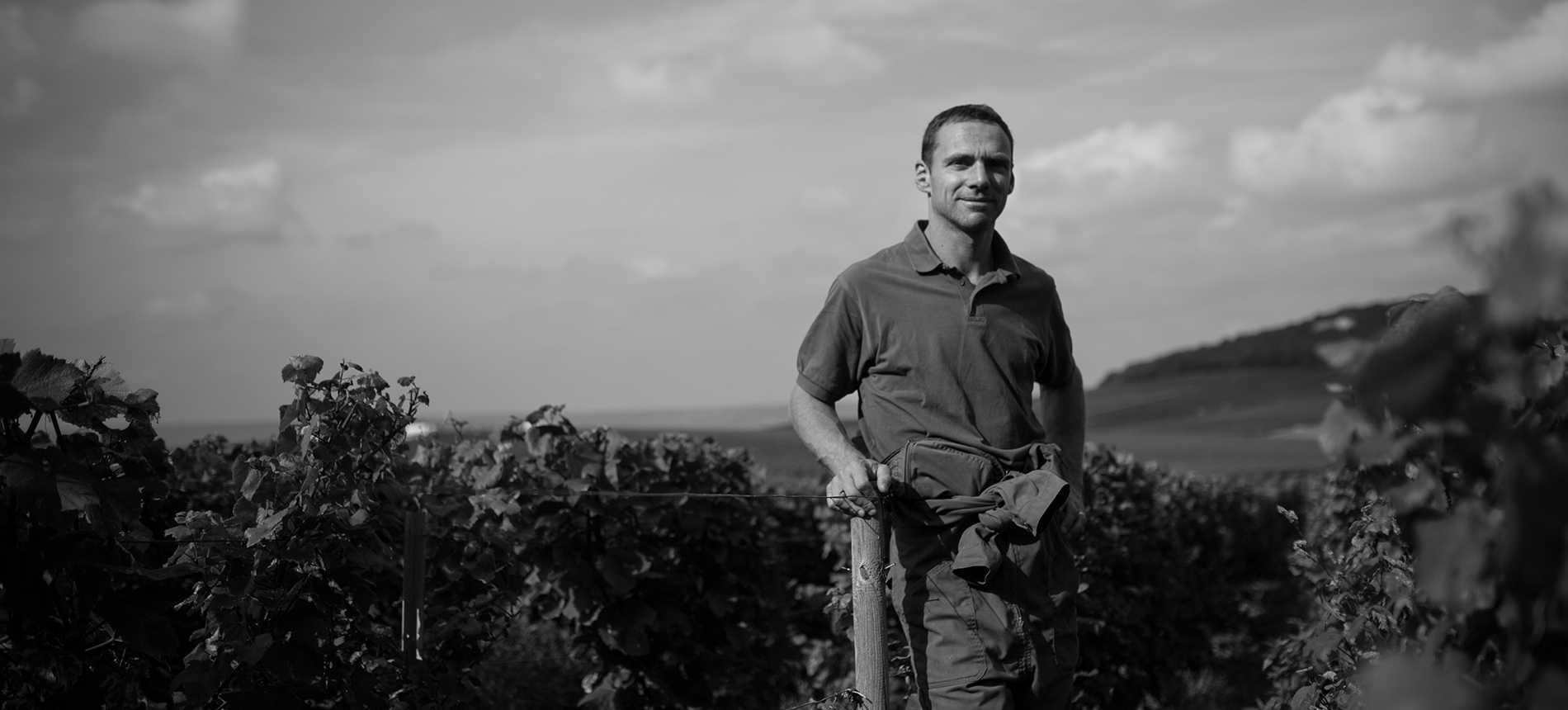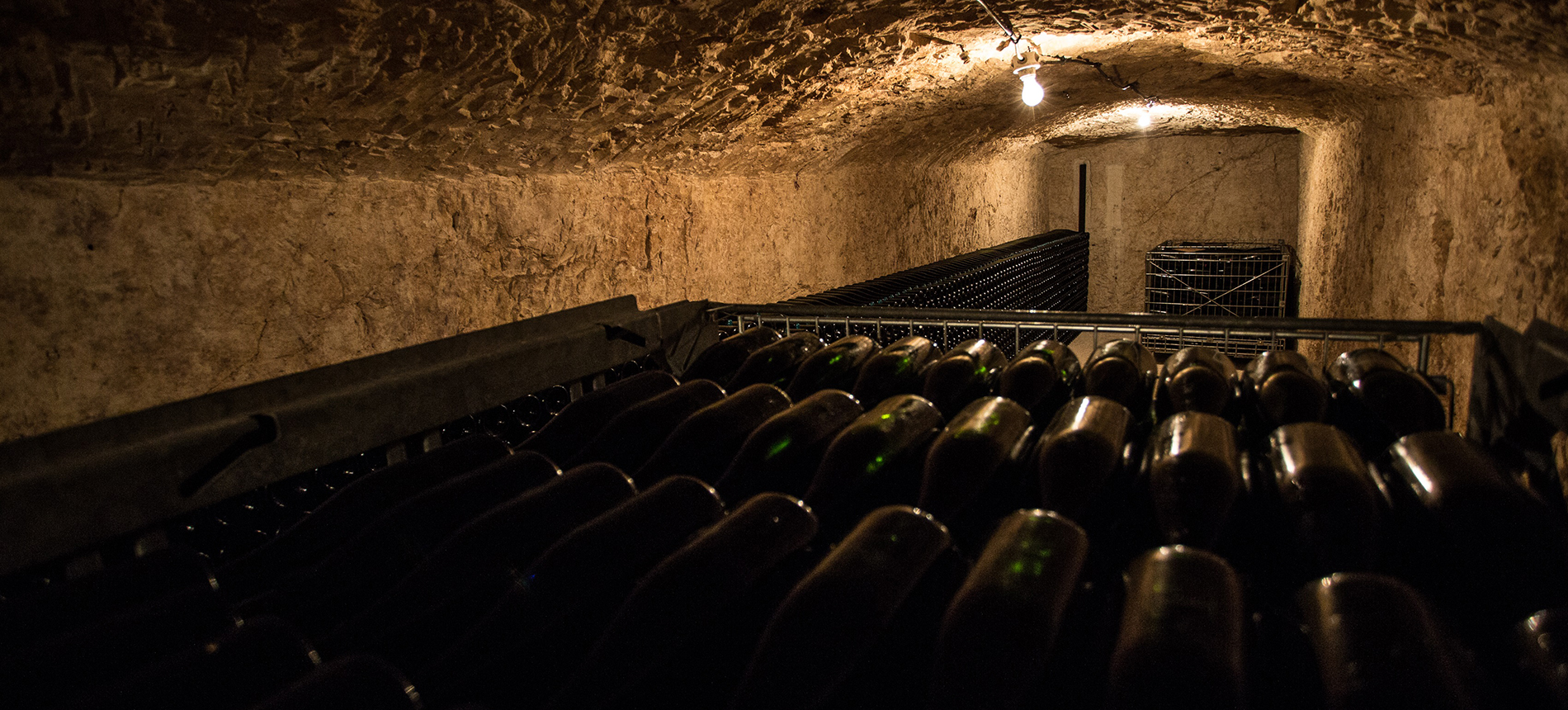The story of the next generation kid taking over the family domaine and peeling off a couple hectares of choice parcels in order to produce a series of super-quality, micro cuvées is now not a new one in the Champagne region. In fact, there seems to be a new project cropping up every month!? But in 1996, when Richard Fouquet took over his family domaine, Champagne Guiborat, at age 21, this was a rare occurrence.
Fouquet represents the 5th generation at this property that was started in 1885. Though he grew up in the Paris suburbs, at an early age he told his grandmother that he intended to make Champagne. Like so many growers in Champagne, Guiborat historically sold grapes before choosing to bottle their own wines. A good portion of the production from Guiborat’s 8 hectares is still sold to Laurent-Perrier. In fact, when Richard took over, he decided to focus his efforts on their best 3 HA of vineyards, most of which are Grand Cru vineyards from the deep chalk of Cramant, Chouilly and Oiry, as well as a vineyard in Mardeuil near Epernay where they farm Pinot Meunier. From this tiny crown jewel of top parcels, Richard and his wife Karine craft an assortment of racy, classic, terroir-driven wines that dazzle in their purity and refinement.
In an average year, Guiborat produces less than 2,500 cases. They farm organically, with careful pruning and work by hand to ensure the best possible grapes. Fermentation and aging are carried out primarily in stainless steel and usually without malolactic. There is a tiny amount aging in neutral barrels, especially for the cuvée Prohibition, which sees 20% oak. The bottles rest in cold underground cellars carved out of the chalk bedrock below the winery and vineyards. The entry cuvee, Tethys, sees a minimum of 24 months on the lees, followed by 8-12 months in the bottle post-disgorgement before release. For the rest of the range, the Fouquet’s are in no rush to release too soon, and everything sees a minimum of 40 months aging sur latte, even longer for magnums.
While the current trend in Champagne is toward single-vineyard, or parcellaire wines, The Fouquets, being the enlightened traditionalists that they are, believe in combining selected parcels to create each of their cuvées. So for their entry-level, “Tethys”, it is a combination of the same 4 different single-vineyards, each providing complementary characteristics that make the whole greater than the sum of the parts. And while Tethys is generally crafted with malolactic fermentation, it is finished with a very low dosage around 1.5g and is always beautifully clean, bright and mineral-driven. Moving up the ladder, the chalky, racy “Prisme” is a blend of 3 single-vineyards (Cramant, Chouilly and Oiry) without malo. As Richard describes, “you experience the wine through the Prism of the terroir.” For their top two cuvées, “De Caurés à Mont Aigu” and “Prohibition”, each is a combination of two vineyards with contrasting soils and expositions in order to complement each other. Caurés is made from their best and oldest vineyards located in Chouilly, all tank, no malo, 1.5g dosage. Truly electric in its focus and purity. “Prohibition” is the outlier in the group, 100% Pinot Meunier from very old vines in Mardeuil in the Marne. It is a bit broader and more overtly powerful, with lovely white flower and herbal notes form the Meunier.
With their tiny production, riveting quality, and a strong established customer base, The Fouquets and Champagne Guiborat have nothing to prove as they could easily sell their wine several times over for the prices they charge. It’s hard not to admire their consistency and focus, not to mention that they have been quietly “doing it right” long before hipster Champagne had its day. Like our friends at Agrapart, they seem to bridge the gap between the classic and the modern. They are not to be missed for any serious Champagne lover.
